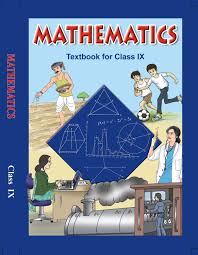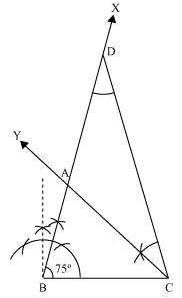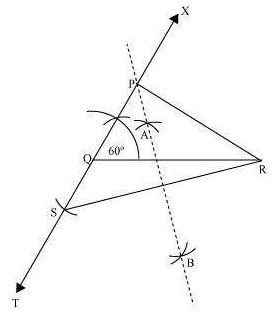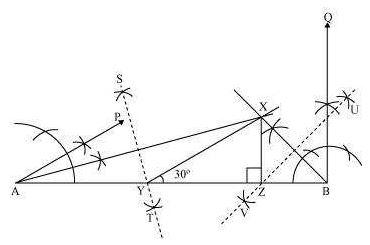Class 9 - Mathematics
Constructions - Exercise 11.2

Top Block 1
Exercise 11.2
Question : 1 : Construct a triangle ABC in which BC = 7 cm, ∠B = 750 and AB + AC = 13 cm.
Answer :
The below given steps will be followed to construct the required triangle.
Step I: Draw a line segment BC of 7 cm. At point B, draw an angle of 75°, say ∠XBC.
Step II: Cut a line segment BD = 13 cm (that is equal to AB + AC) from the ray BX.
Step III: Join DC and make an angle DCY equal to ∠BDC.
Step IV: Let CY intersect BX at A. ∆ABC is the required triangle.

Question : 2: Construct a triangle ABC in which BC = 8 cm, ∠B = 450 and AB − AC = 3.5 cm.
Answer :
The below given steps will be followed to draw the required triangle.
Step I: Draw the line segment BC = 8 cm and at point B, make an angle of 450, say

Mddle block 1
Step III: Join DC and draw the perpendicular bisector PQ of DC.
Step IV: Let it intersect BX at point A. Join AC.
∆ABC is the required triangle.
Question : 3: Construct a triangle PQR in which QR = 6 cm, ∠Q = 600 and PR − PQ = 2 cm
Answer :

The below given steps will be followed to construct the required triangle.
Step I: Draw line segment QR of 6 cm. At point Q, draw an angle of 600, say ∠XQR.
Step II: Cut a line segment QS of 2 cm from the line segment QT extended in the opposite side
of line segment XQ. (As PR > PQ and PR − PQ = 2 cm). Join SR.
Step III: Draw perpendicular bisector AB of line segment SR. Let it intersect QX at point P. Join
PQ, PR.
∆PQR is the required triangle.
Question : 4: Construct a triangle XYZ in which ∠Y = 300, ∠Z = 90° and XY + YZ + ZX = 11 cm.
Answer :
The below given steps will be followed to construct the required triangle.

Step I: Draw a line segment AB of 11 cm.
(As XY + YZ + ZX = 11 cm)
Step II: Construct an angle, ∠PAB, of 30° at point A and an angle, ∠QBA, of 90° at point B.
Step III: Bisect ∠PAB and ∠QBA. Let these bisectors intersect each other at point X.
Step IV: Draw perpendicular bisector ST of AX and UV of BX.
Step V: Let ST intersects AB at Y and UV intersects AB at Z. Join XY, XZ.
∆XYZ is the required triangle.
Question : 5: Construct a right triangle whose base is 12 cm and sum of its hypotenuse and other side is 18 cm.
Answer :
The below given steps will be followed to construct the required triangle.

Step I: Draw line segment AB of 12 cm. Draw a ray AX making 900 with AB.
Step II: Cut a line segment AD of 18 cm (as the sum of the other two sides is 18) from ray AX.
Step III: Join DB and make an angle DBY equal to ADB.
Step IV: Let BY intersect AX at C. Join AC, BC.
∆ABC is the required triangle.

